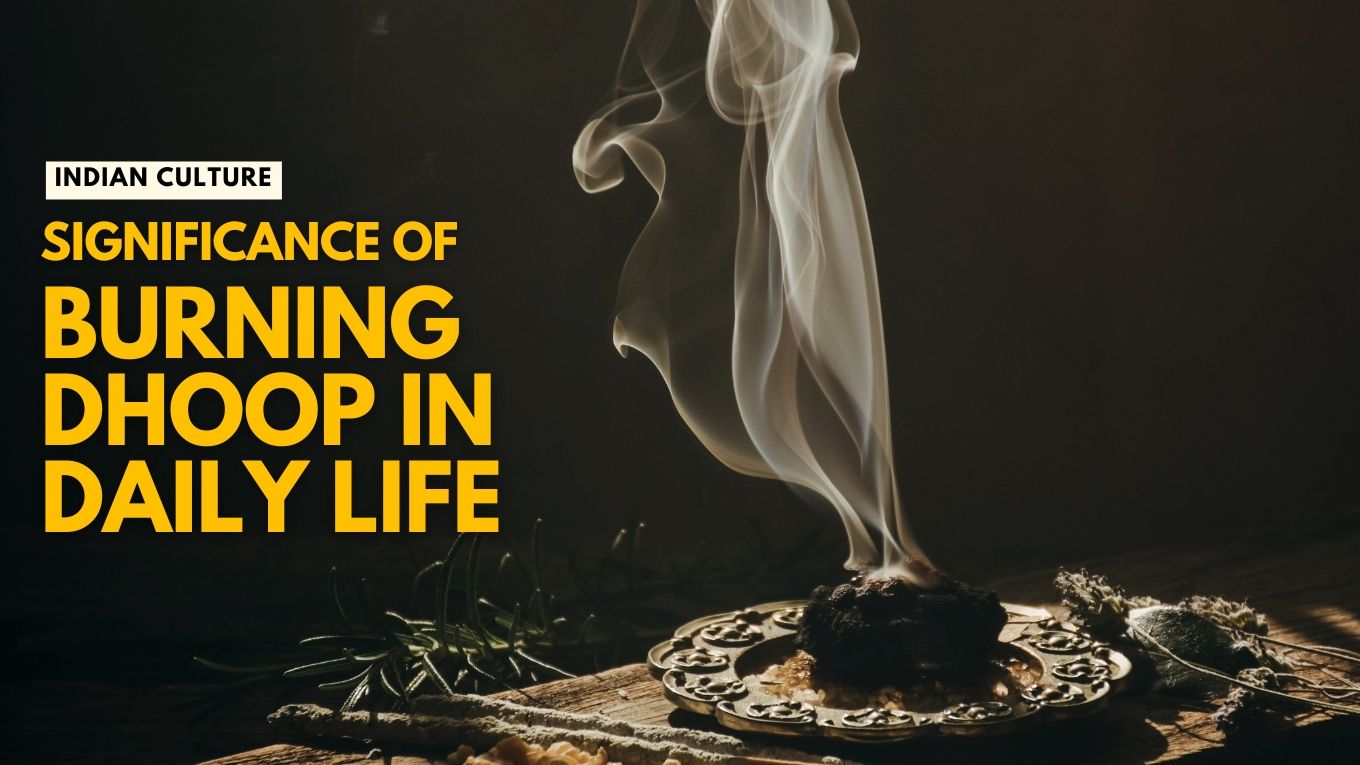For generations, dhoop has been an inseparable part of Indian households, valued not only for its role in rituals but also for the sense of well-being it brings. While it carries deep cultural and spiritual significance, its relevance in today’s lifestyle is stronger than ever.
When dhoop is lit, the natural fragrance spreads warmth and serenity throughout the space. It helps purify the surroundings, reduce stress, and create an atmosphere where focus and positivity naturally flow. Whether during morning prayers, meditation, or simply unwinding after a long day, dhoop works as a bridge between tradition and modern wellness.
Benefits of Burning Dhoop
Burning dhoop is not only a spiritual practice but also has holistic benefits:
- Cleanses the environment. The fragrant smoke masks unpleasant odors and when made from traditional resins and herbs—can help reduce microbial Odors; many classical ingredients (like guggal, panchagavya, and loban) are traditionally used to refresh and deodorize indoor environments.
- Relieves stress and soothes the mind. Pleasant, familiar fragrances can lower tension and create a calming cue for the nervous system, helping you unwind after a busy day.
- Purification—Traditional herbs used in dhoop possess antimicrobial properties that cleanse the air.
- Enhances concentration—ideal for spiritual practices like mantra chanting, meditation, or yoga.
- Invites positivity—brings harmony, peace, and divine blessings into the household.
Best Dhoop for Pooja
The best dhoop for pooja is one that is made from pure, natural, and traditional ingredients such as herbs, resins, roots, flowers, panchagavya, and essential oils. A good pooja dhoop should:
- Be free from chemicals and artificial fragrances.
- Offer a long-lasting and steady fragrance.
- Be made from sacred herbs mentioned in ancient texts like guggal, loban, and sandalwood.
Panchagavya Dhoop is made from the five sacred elements of the cow (milk, curd, ghee, gomutra, and dung) and is considered extremely auspicious. Highly recommended for Vedic rituals and homas.
How to Use Dhoop at Home?
1. Place the dhoop cone/stick/cake in a heat-safe holder.
2. Light the tip until it glows and produces fragrant smoke.
3. Place it in the pooja room, living room, or meditation space.
4. Move the dhoop around the home or temple to spread positivity.
5. Allow the fragrance and smoke to naturally cleanse the environment.
How GowDurbar’s Nityagnihotra Dhoop is the Best Option
GowDurbar’s Nityagnihotra Dhoop is crafted with the essence of Vedic tradition, offering purity, protection, and holistic well-being in every cake. It is formulated with 16 potent natural herbs, Panchagavya, and medicinal tree barks, making it a unique offering that blends spiritual sanctity with holistic well-being.
Why Nityagnihotra Dhoop is unique:
- Natural Shield—Acts as a protective barrier against pollutants and toxic emissions.
- Deep Purification – Cleanses the surroundings and creates a fresh, sanctified environment.
- Holistic Well-Being—The blend of sacred herbs and cow-based ingredients promotes peace of mind, balance, and positive energy.
- Nityagnihotra-Inspired Formulation – Designed to carry forward the Vedic practice of fire offerings in a simplified daily form.
- Eco-Friendly & Authentic—Free from harmful chemicals, rooted in Ayurveda and Indian cultural wisdom.
With GowDurbar’s Nityagnihotra Dhoop, every moment of prayer and meditation becomes more powerful, bringing harmony, health, and auspiciousness into your home.
FAQs on Dhoop Usage
1. Why is dhoop used in daily life?
Dhoop is used to purify the surroundings, create a serene atmosphere, reduce stress, and enhance focus. It bridges traditional rituals with modern wellness practices.
2. What are the main benefits of burning dhoop?
Burning dhoop cleanses the air, relieves stress, promotes concentration, and brings positivity into the home. Traditional herbs like guggal, loban, and panchagavya also help deodorize and purify the environment.
3. Which type of dhoop is best for pooja?
The best dhoop for pooja is one made from pure, natural ingredients such as resins, herbs, flowers, sandalwood, and panchagavya. Panchagavya Dhoop, in particular, is highly auspicious for Vedic rituals.
4. How do I properly use dhoop at home?
Place the dhoop cone, stick, or cake in a heat-safe holder, light it until it glows, and let the fragrant smoke spread. It can be placed in a pooja room, meditation corner or carried around the home for positivity.
5. What makes GowDurbar’s Nityagnihotra Dhoop unique?
It is made with 16 potent herbs, Panchagavya, and medicinal tree barks. Inspired by the Vedic Agnihotra tradition, it offers natural purification, eco-friendliness, and holistic well-being.
6. Is GowDurbar’s Nityagnihotra Dhoop safe and chemical-free?
Yes. It is crafted using authentic Ayurvedic ingredients without chemicals or artificial fragrances, making it safe for daily use.
7. Can dhoop be used beyond religious rituals?
Absolutely. Dhoop can be used during meditation, yoga, or even relaxation after a busy day to create a calm, refreshing, and positive environment.



